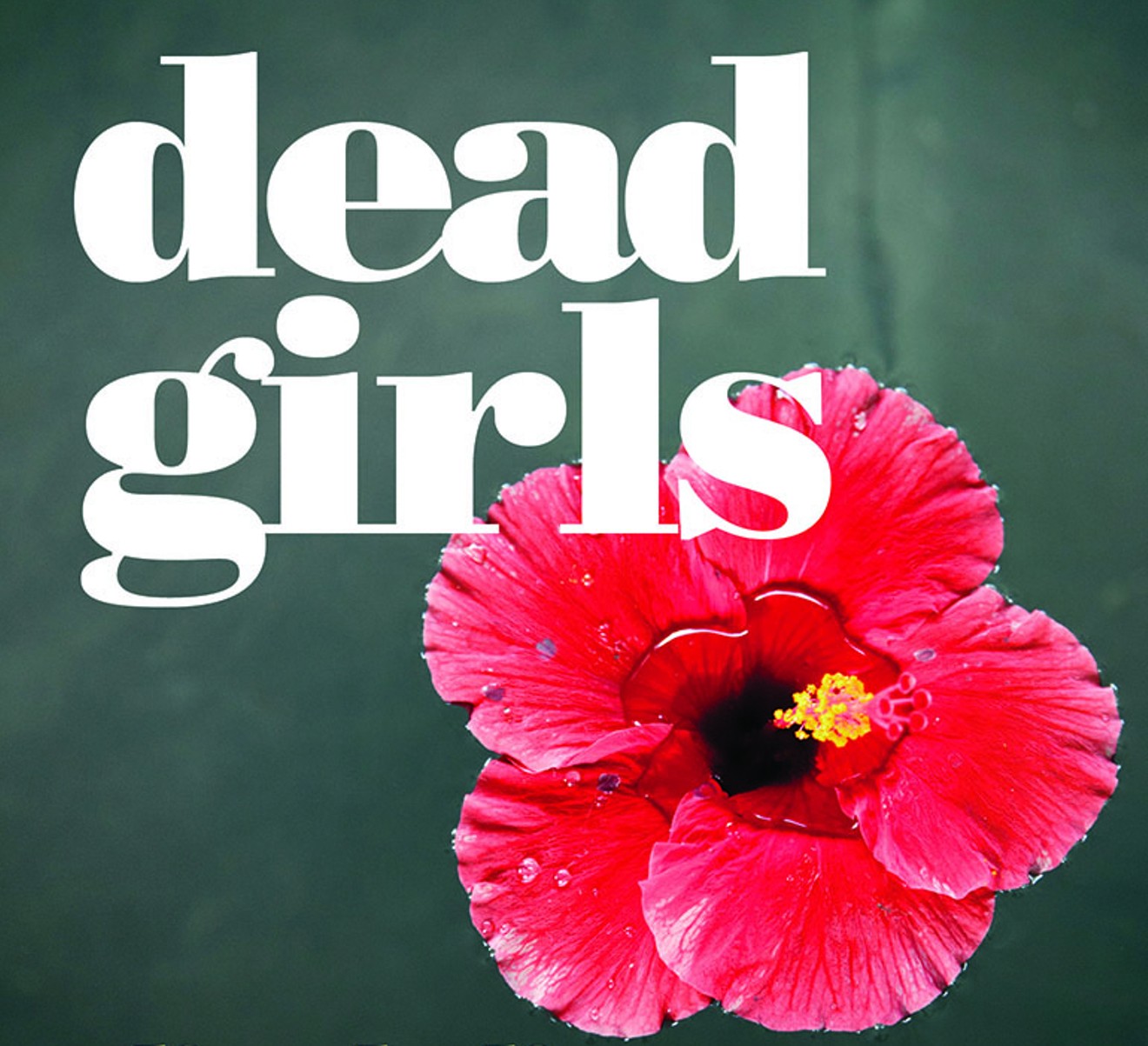Alice Bolin’s Dead Girls: Essays on Surviving an American Obsession (William Morrow, $15.99) hits bookstores on June 26.
Dead Girls, the first collection by critic and essayist Alice Bolin, would stand as one of this year’s essential reads even without that striking, of-the-moment title. The book kicks off with the indispensable essay “Toward a Theory of a Dead Girl Show,” which with great wit and skepticism examines the phenomenon of TV (and film and novel and true-crime) narratives that center on the murder or kidnapping of a beautiful white teen. It’s urgent, necessary criticism, but don’t think that’s all Dead Girls offers. Like the shows she’s considering, Bolin soon expands out from comely corpses to survey a wider world, in this case many of her pop obsessions: Swedish mystery novels; the work of Joan Didion, Shirley Jackson and Toni Morrison; Britney Spears; the treatment in true-crime literature of murders that have long fascinated her hometown of Moscow, Idaho.
Dead Girls finds the author making sense of our darkest interests, shining a light on uncomfortable truths. It’s also as engaging as it is insightful, the kind of book you might steal a couple of minutes with at work when you think nobody’s watching.
I recently spoke to Bolin by phone.
You note in the book that by using the title Dead Girls, you are in a way part of the same Dead Girls machine that profits off our culture’s fascination with dead girls. Why is the word "girl" or "girls" in so many titles?
The word is slippery. Who gets to be a girl is something that’s contested in our culture and is really wrapped up in whiteness and also sexuality and innocence and the contradictions between them. All that is probably why so many thrillers have that word in them. There’s dead girl shows but not dead woman shows. Laura Palmer [of Twin Peaks] is a girl who dies at seventeen, but she doesn’t really look like a girl. She’s sexually mature. Amy in Gone Girl is like 37 years old or something.
You write that Amy — in the book and the film — is a construction that resembles no woman who has ever existed, but that what the story suggests is that there’s something scarier to our culture than women being abused or killed or going missing.
Right. Gone Girl really plays to these nightmare scenarios that even sort-of decent men entertain about being misunderstood or accused of something they didn’t do. It ties into all of these me-too boogeyman fears where the idea of a woman being victimized is less terrifying than the thought of a man being falsely accused.
You write about the masculine fantasy of control that is at the root of a lot of these narratives. When a girl like Laura Palmer is dead, she’s no longer out of control.
There are these dual myths in a funny way between control and innocence. Innocence is something that white people believe that they have, and that in a lot of stories men believe that they have. I think about something James Baldwin said, that in a noir story, the man is the innocent and the femme fatale the guilty party, even if the man is some gangster who’s killed a million people. That idea of innocence is something that privileged people hold on to really tightly. Being questioned or revealed as less innocent than we are is something that makes privileged people feel out of control. So I think that is something that leads to a lot of the ugliness that we see in real-life violence and in on-screen and fictional violence — attempts to recapture that control and all that being innocent and pure and beautiful affords us.
Writing about the dead girls who launch pop narratives like Twin Peaks or Veronica Mars, you describe a “sanctifying haze” around them. Does the dead girl — the Black Dahlia or Lilly Kane — come to be seen as more innocent because of her death?
Oh, yes. Greil Marcus writes the best about all the different versions of Laura Palmer, how she’s not the same character at all from Twin Peaks to Fire Walk With Me to The Return, and that David Lynch doesn’t even really try to make all the details line up. But we know that like Britney Spears, she’s not that innocent. Her death absolutely is what absolves her and makes her a symbol of purity. Lilly Kane in Veronica Mars is also a bad girl. For them, becoming a dead girl is both a kind of punishment and also a merciful honor-killing sort of act.
You describe the dead girl’s opposite, the femme fatale, as a problem to be solved.
Quite often with the femme fatale, if you strip away the writers’ disdain, you’ll see she’s just a woman who has survived. A woman who has not ended up as a dead girl becomes a femme fatale because there’s a sort of fundamental level of manipulation at the heart of these characters. Lilly Kane and Laura Palmer both have the femme fatale hallmarks of manipulating men, being too crafty and clever for their own good, being a little bit mysterious, being attracted to older men.
You get at some of these same points in your chapter on Britney Spears, who you just mentioned. You write about how, despite having known the song for years, the cry of loneliness at the heart of “Baby One More Time” didn’t penetrate your brain until recently. Why is it easy in this culture to miss the pain that a Britney is expressing?
I think it’s two things. These Max Martin Swedish-generated lyrics from that era of pop music, maybe ’98 to 2001, really make no sense. There’s “Show Me the Meaning of Being Lonely,” by the Backstreet Boys, where they sing, “Loneliness has always been a friend of mine.” The word lonely was sort of in the lexicon and being regenerated by the pop-lyric computer. So there’s that. As for Britney singing “Hit me baby one more time,” well, what does she mean? Is she playing blackjack? Is it a sadomasochism thing? That’s something that has never been resolved.
But there is a level where we don’t really want to extend compassion to these female icons. I think there’s a reason why women like Cher or Britney Spears or even Lindsay Lohan have been in a way rescued by the gay community, where they’re appreciated for their talent and glamour, but also as human beings who have felt pain. But this patriarchal uber-culture is reluctant to acknowledge women’s pain, especially of women who are young and successful.
One argument in the book stunned me. You write about the character of the profiler, who in so many mysteries teases out all the highly specific odd traits of the killer. The fictional profiler’s profiles are at odds with what’s actually the truth in most real-life murders of women — that the husband did it. You suggest that our pop narratives’ insistence on the killer not being the obvious person makes it hard for us to recognize the profile in real life.
I have a lot of skepticism about the whole mindhunter thing that is really common in the true-crime genre. They’ll say, “The killer is probably a Marine, probably [5-foot-8],” like they have a psychic ability to identify the murderer. It speaks to this ideal of a detective who has essentially supernatural abilities and also our trust in forensic psychology. Even our ideas of what a sociopath or psychopath is remains wrapped in a lot of doubt and prejudices we have about crime, and are not as scientific as what we want them to be. So, that’s something I have trouble with. It makes it easy to shake off the people we don’t want to suspect. A lot of time the actual profile would be, “He’s a man, a white man who probably has some privilege. You might not have guessed that it’s him, but it is.”
There’s a type of dead woman I see in entertainment a lot, one you don’t look at at length in the book. That’s the dead wife, whose murder in movies like Upgrade or Deadpool 2 gives the hero an excuse to avenge her. She’s less an object of fascination than she is a narrative device.
It happens all the time. In the show 24, the president’s wife is murdered. The detective in so many books has lost his daughter. But we don’t really hear about the daughter or the wife; they’re not really important other than as a wrinkled snapshot in his wallet. She’s a wrinkle in his psyche. Even in that horrible recent Godzilla movie, isn’t it Juliette Binoche who gets killed? Even though the dead girl has a mystique about her and propels the narrative, it’s really not that different. The thing that all these narratives are invested in is making women less human, using them as plot devices and making sure that we are slightly saddened by her death but that we never empathize with her. It’s all part and parcel of the same shit. The dead girl is just a little bit more symbolically fertile. The wife is a pretty stale image for us; the teenage girl has a lot more to work with.
[
{
"name": "Air - MediumRectangle - Inline Content - Mobile Display Size",
"component": "12017618",
"insertPoint": "2",
"requiredCountToDisplay": "2"
},{
"name": "Editor Picks",
"component": "17242653",
"insertPoint": "4",
"requiredCountToDisplay": "1"
},{
"name": "Inline Links",
"component": "18838239",
"insertPoint": "8th",
"startingPoint": 8,
"requiredCountToDisplay": "7",
"maxInsertions": 25
},{
"name": "Air - MediumRectangle - Combo - Inline Content",
"component": "17261320",
"insertPoint": "8th",
"startingPoint": 8,
"requiredCountToDisplay": "7",
"maxInsertions": 25
},{
"name": "Inline Links",
"component": "18838239",
"insertPoint": "8th",
"startingPoint": 12,
"requiredCountToDisplay": "11",
"maxInsertions": 25
},{
"name": "Air - Leaderboard Tower - Combo - Inline Content",
"component": "17261321",
"insertPoint": "8th",
"startingPoint": 12,
"requiredCountToDisplay": "11",
"maxInsertions": 25
}
]












